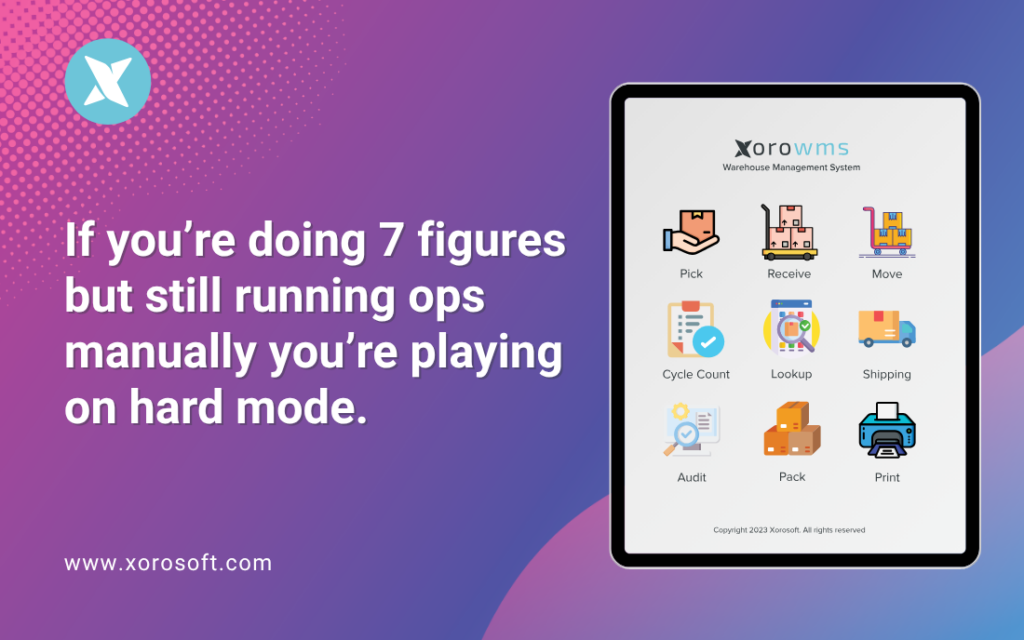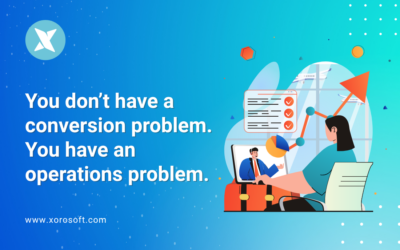
Why Fast-Growing Brands Feel Constant Operational Pressure
When a DTC or omnichannel brand crosses into 7-figure territory, the complexity of operations increases rapidly. Therefore, many teams discover that they need operations automation for ecommerce brands much earlier than they expected, because spreadsheets, lightweight apps, and manual workflows begin to fail under real demand. Instead of keeping up, these disconnected tools create bottlenecks and force leaders into constant firefighting.
What Growth-Stage Brands Struggle With Before Automation
The Rising Cost of Manual Workflows
When orders increase, the operations foundation starts shaking. Even though the team might work harder, the underlying processes stay fragile. Consequently, errors compound and create downstream issues.
-
Inventory numbers differ between Shopify, Amazon, the warehouse, and accounting.
-
Purchasing becomes reactive rather than planned.
-
Warehouse workflows rely on one or two people who “know the process.”
-
Finance waits for numbers that should already be visible.
-
Leaders cannot rely on reports that change day by day.
Since each of these issues drains time and cash, removing them quickly becomes a competitive advantage. Therefore, moving toward operations automation for ecommerce brands is no longer optional; it’s a structural requirement.
Why Disconnected Systems Slow Down Ecommerce Operations Automation
Fragmented Data Makes Teams Slower
Multiple systems lead to multiple versions of the truth. Although this might feel manageable at first, it always breaks under growth pressure. Since teams rely on outdated numbers, the entire business reacts slowly.
Manual Purchasing Leads to Overbuys and Stockouts
When buyers must manually check safety stock, vendor lead times, and sales velocity, the chance of error increases significantly. As a result, brands frequently sell out of bestsellers while overstuffing cash into slow-moving SKUs.
Warehouse Operations Become Too Dependent on Tribal Knowledge
Without structured WMS workflows, warehouse efficiency depends on individual judgment. However, individual judgment is inconsistent. Therefore, pickers move slower, mis-picks increase, and new hires struggle.
Finance Cannot Close Quickly
If accounting syncs rely on exports, imports, and reconciliation spreadsheets, month-end closes stretch far longer than necessary. Although finance teams do their best, they cannot produce real-time clarity without automation.
What Automated Operations Look Like for Ecommerce Brands
A Single Source of Truth Across Every Channel
With a centralized system like XoroONE, all data flows through one real-time engine. Consequently, Shopify, Amazon, wholesale, retail, and EDI stay perfectly aligned.
Inventory Numbers Update Instantly
Stock levels, bin counts, sales orders, transfers, and purchase orders update automatically. Therefore, decision-making becomes faster and more confident.
Warehouse Teams Follow Guided Workflows
Mobile scanning reduces thinking and prevents mis-picks. In addition, pick paths become optimized, so fulfillment speed improves dramatically.
Purchasing Uses Predictive Rules
Replenishment logic can consider lead times, sales velocity, seasonality, and safety stock. As a result, brands eliminate avoidable stockouts and reduce cash tied in excess inventory.
Accounting Sync Stays Clean
GL, AP, AR, landed costs, and COGS automatically flow into accounting. Since no duplicate entry is required, financial accuracy improves quickly.
Leaders Gain Real-Time Visibility
Dashboards show current margin, working capital, inventory turns, and operational performance. Therefore, decisions become proactive rather than reactive.
How One Brand Benefited From Operations Automation for Ecommerce Brands
The Starting Point: Heavy Manual Work and Constant Surprises
A rapidly growing apparel brand passed $10M in revenue but struggled operationally. Because they relied on spreadsheets, partial WMS tools, and manual purchasing, their operational costs increased every quarter. As orders grew, their accuracy dropped.
They faced the following challenges:
-
Mis-ship rate above 12%
-
Month-end close taking 18 days
-
Frequent stockouts on core SKUs
-
Warehouse training requiring weeks
Although the team worked hard, the system held them back.
After Implementing Xorosoft’s Automated Workflows
Once the brand adopted Xorosoft and centralized all operations, improvements followed quickly:
-
Mis-ship rate dropped to 1.2%
-
Month-end close fell to 4 days
-
Inventory accuracy rose to 98.7%
-
Fill rate increased to 97%
-
New warehouse staff onboarded in under 2 hours
Because automation removed the daily friction, the team finally had time to focus on wholesale expansion and creative growth initiatives.
Seven Actions That Build Automated Operations
1. Consolidate Inventory Into One Central Engine
Because separated tools create inconsistencies, consolidate everything into a unified inventory system. As a result, stock accuracy increases and oversells disappear.
Metric: Inventory accuracy + reduction in stockouts.
2. Automate Replenishment Based on Real Data
Set automated purchasing rules using sales velocity and lead times. Since the system handles the math, buyers spend more time on strategy.
Metric: Fill rate + inventory turns.
3. Deploy Structured Warehouse Workflows
Use mobile scanning, guided picks, and barcode validation. Therefore, employees follow the correct process every time.
Metric: Pick accuracy + order cycle time.
4. Integrate Every Sales and Fulfillment Channel
Connect Shopify, Amazon, 3PLs, EDI, and wholesale. Since data moves instantly, the risk of overselling disappears.
Metric: Channel sync accuracy + oversell reduction.
5. Automate Order Routing Logic
Define fulfillment rules by location, inventory availability, or shipping method. Consequently, shipping becomes faster without manual decisions.
Metric: Time to ship + cost per order.
6. Replace Manual Accounting Workflows
Sync financial data directly from operations to accounting. Because the system eliminates double entry, finance gains clarity.
Metric: Month-end close time + margin accuracy.
7. Build Real-Time Dashboards for Leadership
Create live reports for inventory performance, purchasing, warehouse activity, and margin. Therefore, leadership makes confident, data-backed decisions.
Metric: Cash conversion + gross margin protection.
A Practical Rollout Sequence for Growing Teams
Inventory Alignment Comes First
Begin by reviewing SKUs, units, variants, and naming conventions. Although this takes time, it provides the foundation for accurate operations.
Warehouse Configuration Follows Next
Define bin locations, pick paths, staging areas, and scanning workflows. As a result, the warehouse becomes structured and repeatable.
Sales Channels and Accounting Connect Third
Integrate Shopify, Amazon, marketplaces, and 3PLs. Then confirm accounting sync flows correctly. Therefore, the entire operation moves in real time.
Vendor Setup and Purchasing Logic Come After
Load vendor catalogs, pricing, lead times, and MOQs. Once predictive rules activate, replenishment becomes proactive.
Training and Go-Live Complete the Rollout
Guide warehouse, purchasing, and finance teams through daily workflows. Because Xorosoft is built for ease of use, training remains quick and manageable.
Common Questions Brands Ask During Automation Projects
Do we need an IT team to run the system?
No. Modern platforms like Xorosoft ERP are designed for operators, not developers. Therefore, non-technical teams manage them easily.
Do we need to fix the warehouse before onboarding?
Not necessarily. Since structured WMS workflows create order, the warehouse improves naturally once scanning and guided picks begin.
Can one system replace our existing stack?
In many cases, yes. Inventory, WMS, purchasing, production, accounting sync, forecasting, and reporting consolidate into a single platform.
How quickly do brands see improvements?
Most teams notice changes in pick accuracy, operational speed, and purchasing efficiency within 30–60 days.
Automating Operations Is the New Competitive Advantage
As ecommerce grows more competitive, manual operations create unnecessary friction. However, when brands adopt operations automation for ecommerce brands, they unlock the ability to scale without chaos. Because Xorosoft provides real-time visibility, automated workflows, and unified data, leaders gain the clarity and confidence needed to focus on growth rather than daily firefighting.
If you’re ready to eliminate manual work, increase accuracy, and build a resilient operational foundation, exploring Xorosoft is the next step.









